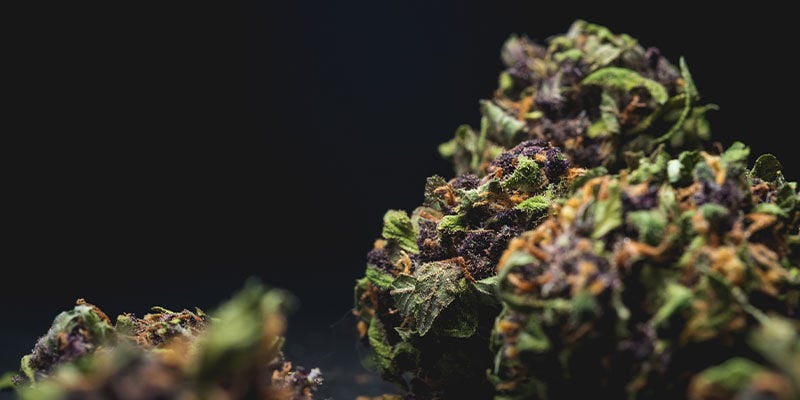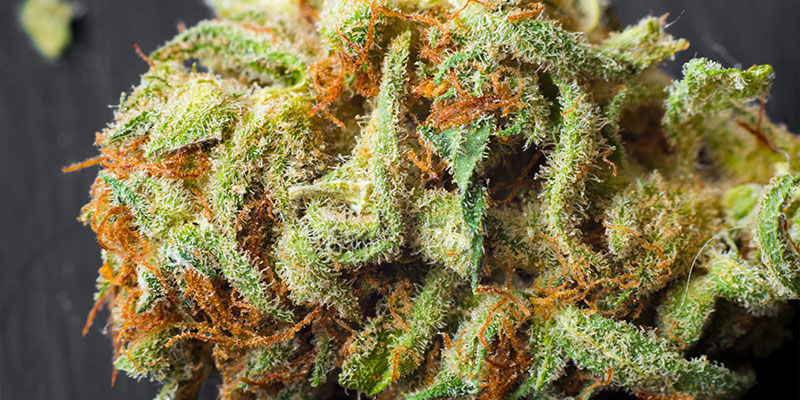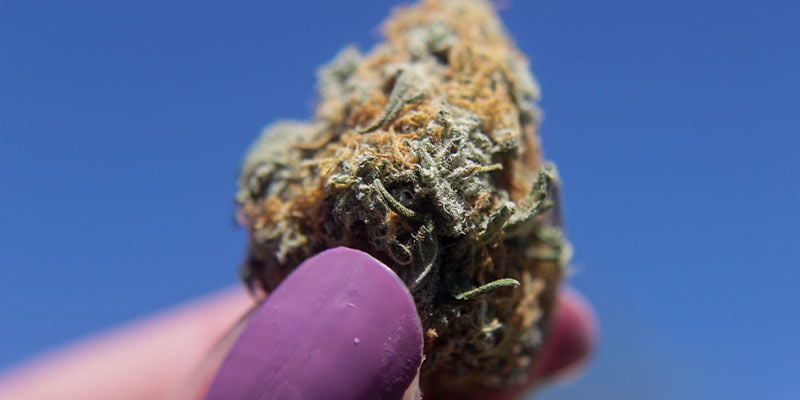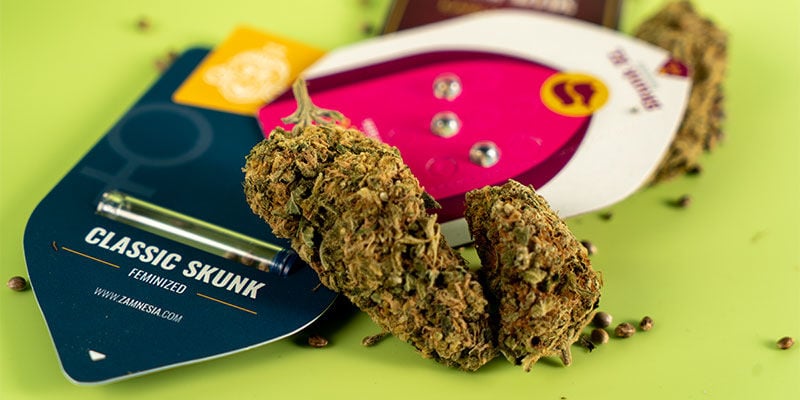
Good Vs Bad Weed: How To Tell The Difference
You just got home after a long day of work. You're ready to sit down and mellow out for a while. However, you didn't pay much attention when picking up that bag of bud—it absolutely sucks! But don't worry, you're never going to make the same mistake again. Below, you'll learn how to identify great weed before you even sit down to smoke it.
What separates the good weed from the bad? Well, it depends! Some smokers could come across genuinely pristine cannabis and dislike it based on their personal preference for aroma and effects. However, this doesn’t discount the fact that it’s good weed!
Truly bad weed lacks crystals and feels overly wet or dry. It also often has an unpleasant taste and feels harsh on the throat. In contrast, good weed tastes superb, feels sticky, and possesses plenty of crystals. Continue reading to find out more about what separates the good weed from the bad.
What makes weed good or bad?

What makes weed good or bad can vary from person to person. Some consumers prefer buds that are high in THC with sweet terpenes, for example, whereas others prefer more CBD and earthy flavours.
Regardless of the differences in flavour and effects, most cannabis users agree on a set of objective variables that set apart good and bad cannabis flowers. Typically, good buds are dense, have a potent aroma and flavour, and feature a generous coating of crystals (known botanically as trichomes).
High-quality flowers have also been cured properly to enhance their flavour, harbour zero mould, and aren’t airy, overly dry or wet, or packed with seeds and stems. Several factors can influence whether weed turns out good or bad, including the skill of the grower and the quality of the genetics they choose to cultivate.
How to tell the difference between good and bad weed
There are multiple ways to determine the quality of cannabis flowers. Of course, smoking/vaping best exposes you to the flavours and effects. However, this action usually happens after buying your weed. Before you exchange any money, considering you’re dealing with a reasonable vendor, you can also look, smell, and feel for other telltale signs. Learn more about these below.
Aroma
Several groups of compounds contribute to the aroma of weed flowers. These include terpenes, which are responsible for a wide variety of scents, such as those of fruit, flowers, pepper, and pine. Volatile sulphur compounds, in contrast, infuse some varieties with smells of skunk.
The aromas of good cannabis buds will vary, but they should smell attractive and strong. In contrast, poorly dried and cured buds often smell grassy and musty.
Crystals

If you’ve ever taken a close look at a weed bud, you’ll know exactly what we mean when we talk about crystals. These tiny structures are called trichomes, and they produce the terpenes and cannabinoids that dictate the flavour and effect of each strain.
The density of trichomes on the surface of a bud points toward its quality. Why? Because the more trichomes present, the more terpenes and cannabinoids the bud will possess. This equates to potentially more profound effects and more potent aromas and tastes.
But trichome density alone doesn’t necessarily indicate quality. Experienced growers aim to harvest based on trichome colour. Completely clear trichomes are immature, and flowers with amber trichomes have been left too long. Ideally, your buds should have milky and opaque trichomes. You can determine this using a cost-friendly pocket microscope. Take some time to study those beautiful trichomes.
Wet vs dry
When inspecting cannabis flowers, they should feel sticky and firm instead of wet and damp or brittle and dry. Give those buds a little squeeze and make sure they bounce back. Wet cannabis feels harsh to smoke, smells musty, and can harbour mould. Overly dry weed also feels harsh on the throat when smoked. Moreover, it lacks cannabinoids and terpenes, as many of these volatile compounds degrade when growers dry cannabis too quickly or too long.
Too leafy

Botanically speaking, buds aren’t flowers. Instead, they are clusters of smaller pistillate flowers. These structures make up the cannabis inflorescence, which also includes stems and small leaves known as sugar leaves. High-quality buds almost always arrive on the shelf manicured, meaning growers have taken the effort to remove most of the sugar leaves either before or after drying.
Sugar leaves form a layer around dried flowers. If left in place, they provide a habitat for mould to form. Plus, these structures contain fewer trichomes than pistillate flower tissue. This means, by weight, you’re getting less bang for your buck when buying leafy buds. Also, make sure you don’t get the bottom of the bag. Look for whole buds, not crumbs, and check for signs of stems and seeds, as well as mould.
Stigma colour
As well as detecting trichomes, you’ll also notice small, hair-like structures when taking a close look at weed buds. These are known as stigmas, and each pistillate flower possesses two of these protruding tendrils. They stick out into the open air during the flowering phase, positioned to receive pollen from a male plant.
Ideally, they will never come into contact with pollen, as this will cause the female plant to start bearing seed. Stigmas typically start out white during early flowering and turn orange or red during the latter stage of bloom. White stigmas are a sign of immature buds. You want to see darker hairs, which could even appear red or purple in some instances, when looking for good-quality weed.
The stickier, the better

Cannabis flowers are sticky because of the resin exuded by their trichomes. This viscous substance forms on buds as trichomes rupture and release their contents. For the plant, these chemicals help to defend against pests and even UV rays from the sun. For smokers, the stickier the buds, the more cannabinoids and terpenes present.
High-quality buds should feel sticky to the touch. However, be careful to differentiate between stickiness and wetness. Lightly press a bud between your thumb and forefinger; you should see and feel resin on the tips of your digits afterwards, like you dipped your finger in honey.
The smoke/vape test
After ticking off all of the criteria mentioned above, you can be fairly certain that you’re about to invest in some good cannabis. If you’re lucky, your vendor might let you take a trial puff. However, smoking and vaping usually happen following a transaction.
So, what should you look out for when taking a hit? Initially, you’re looking to analyse the flavour. The smoke (or vapor) should feel relatively smooth on your throat and in your lungs. You should also experience the general flavour profile as advertised, be it fruity, earthy, or skunky. Any flavours of hay, mowed grass, or mustiness are an indicator of badly dried and cured weed.
Shortly after tasting, you’ll start to feel the effect creep in. Again, this experience will vary drastically depending on the phytochemical content of the strain in question. A high-THC strain will get you high fast, whereas one high in CBD will exert a clear-headed and relaxing effect.
Get a load of some good weed today

There you have it—you know exactly what to look out for to secure some good weed. High-quality cannabis flowers smell strong and feel sticky, possess plenty of milky trichomes alongside dark hairs, and they should taste pleasant and produce a smooth smoke or vapor.
In contrast, bad weed smells like hay, feels overly wet or dry in the hands, and leaves a harsh feeling in the throat and lungs. Use this newfound knowledge to purchase the best cannabis you can get your hands on!
To ensure the highest-quality weed possible, browse the Zamnesia Seedshop for a vast assortment of top-quality seeds. Sourcing good cannabis seeds substantially increases the chances of harvesting good weed!
-
 5 min
6 September 2019
Top 10 Best Cannabis Strains
Ever wondered what our favourite cannabis strains are here at Zamnesia? Wonder no longer, we have put together a list of our top 10.
5 min
6 September 2019
Top 10 Best Cannabis Strains
Ever wondered what our favourite cannabis strains are here at Zamnesia? Wonder no longer, we have put together a list of our top 10.
-
 3 min
18 June 2018
How To Recognise High-Quality Cannabis Seeds
Seeds are the beginning of life. Sorting out the good seeds from the bad is essential to growing some dank nugs. Check out this article to learn the tells of good and bad cannabis seeds.
3 min
18 June 2018
How To Recognise High-Quality Cannabis Seeds
Seeds are the beginning of life. Sorting out the good seeds from the bad is essential to growing some dank nugs. Check out this article to learn the tells of good and bad cannabis seeds.









 United States
United States













